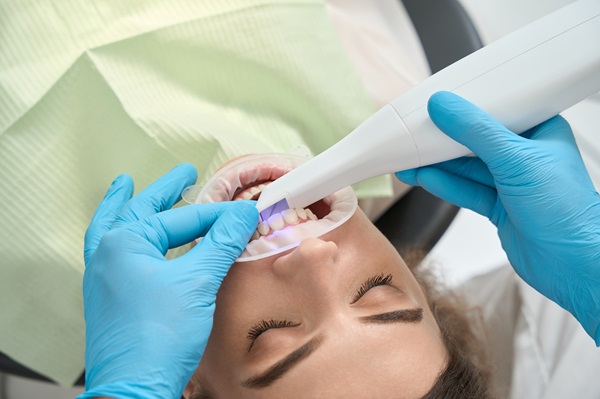If you are facing the prospect of tooth extraction, it’s completely natural to feel a mix of emotions—perhaps a touch of apprehension, maybe even some curiosity about what lies ahead. Whether you’re dealing with severe tooth decay or considering extraction as a preliminary step for a dental transformation, you’re entering a phase that requires both understanding and preparation. This guide is your go-to, offering insights into the extraction process, highlighting potential risks, and guiding you through a speedy recovery.
What is Tooth Extraction?
Tooth extraction, simply put, is the removal of a tooth from its socket in the jawbone. While the mere thought of it might evoke a sense of unease, this dental procedure is often necessary to address various oral health issues. Whether it’s extensive tooth decay, an impacted wisdom tooth, overcrowding, or preparation for orthodontic treatment, tooth extraction is a common intervention that aims to alleviate pain, prevent further complications, or pave the way for a healthier, more aligned smile.
What to Expect During a Tooth Extraction?
The tooth extraction procedure requires careful planning and precision to minimise discomfort and ensure a smooth recovery. In this section, we’ll walk you through what exactly happens during a tooth extraction, demystifying the process and providing you with a clearer understanding of what to expect.
Initial Assessment
Your dentist will thoroughly examine the tooth slated for extraction and the surrounding oral structures. Through X-rays and visual inspection, the dentist evaluates the tooth’s condition, its position in the jaw, and potential complexities such as the presence of multiple roots or proximity to nerves. It allows the dentist to anticipate any challenges and tailor the approach to suit your unique oral care needs.
Numbing the Tooth
Before starting the procedure, your dentist will administer local anaesthesia to the area surrounding the tooth to ensure that you won’t feel pain during the procedure. The numbing process is essential for your comfort and is generally the first step in preparing you for a smooth and comfortable extraction experience.
Extraction of the Tooth
Once the tooth is numb, the dentist will use specialised instruments to loosen and remove the tooth from its socket gently. This process may involve slight pressure and movement, but you should not experience pain. The dentist may need to perform additional steps based on the complexity of the extraction, such as dividing the tooth into sections for easier removal.
Closing the Space
After the tooth is successfully removed, the dentist will evaluate the extraction site. Depending on the extraction’s complexity and the surrounding tissues’ condition, sutures may be necessary to close the space left by the removed tooth. This step is particularly common in surgical extractions or when multiple teeth are extracted simultaneously.
Controlling Bleeding
To control bleeding after tooth extraction, the dentist will place a gauze pad over the extraction site and instruct you to bite down gently. You may be asked to maintain this pressure for about an hour. Following gauze removal, some initial bleeding is normal. Sometimes, the dentist may recommend biting on a damp tea bag for 30 minutes, as tannins in tea can aid in clotting. These measures are essential to ensure a stable blood clot at the extraction site, facilitating proper healing and minimising the risk of complications.
Swelling Management
Post-extraction swelling is a common occurrence. To manage swelling, your dentist may recommend applying an ice pack to the outside of your face near the extraction site. This can help reduce inflammation and discomfort in the hours and days following the extraction.
Tooth Extraction Aftercare
After the tooth extraction, your dentist will offer detailed post-extraction care instructions. These guidelines will cover all essential aspects, such as oral hygiene practices, dietary restrictions and pain medications to manage pain or prevent infection, ensuring a smooth and comfortable recovery process.
At-Home Care After Tooth Extraction
After a tooth extraction, diligent care is paramount for a smooth and successful recovery. Apart from taking prescribed pain medication, here are some essential at-home care tips you can follow:
- Brush your teeth carefully, avoiding the extraction site. Use a soft-bristled toothbrush and follow your dentist’s instructions on when to resume regular brushing.
- Rinse your mouth with warm saltwater several times a day, especially after meals. This practice helps keep the extraction site clean and promotes healing.
- If there’s residual bleeding, bite on a gauze pad provided by your dentist or a clean piece of cloth. Applying gentle pressure for a specified time can help control bleeding.
- Apply an ice pack to the affected area during the first 24 hours to minimise swelling. Use it in intervals, and always wrap the ice pack in a thin cloth to avoid direct contact with the skin.
- Stick to a soft-food diet initially, including yoghurt, mashed potatoes, and soups. Avoid hot, hard, or spicy foods that could irritate the extraction site.
- If advised by your dentist, refrain from smoking and limit alcohol intake during the initial healing period, as these can impede recovery.
- Lastly, make sure to attend any follow-up appointments scheduled by your dentist. They will monitor your healing progress, remove sutures if necessary, and address any concerns you may have.
Related: Is Tooth Extraction Painful? Procedure and Pain Management Options
Potential Risks Associated with Tooth Extraction
Like any medical procedure, tooth extraction comes with potential risks and complications. Although they are relatively uncommon, it’s essential to be aware of these possibilities to ensure a proactive approach to post-extraction care.
- Pain and bleeding: While it’s normal to experience pain and bleeding after the procedure, excessive or prolonged symptoms may indicate an underlying issue. If you notice persistent pain or bleeding beyond the expected duration, make sure to communicate promptly with your dentist.
- Infection: Infections can occur post-extraction. Signs of infection may include increased swelling, redness, persistent pain, or discharge. Following proper oral hygiene practices and taking prescribed antibiotics can help prevent infections.
- Dry Socket: This condition occurs when the blood clot that typically forms after extraction is dislodged or dissolves prematurely, leaving the bone exposed and causing severe pain. To prevent a dry socket, avoid activities that may disturb the clot, such as vigorous rinsing, drinking through straws, or smoking.
- Nerve Damage: In rare cases, nearby nerves may be affected during extraction, leading to numbness or tingling in the lips, tongue, or chin. Your dentist will take precautions to minimise this risk, especially during complex extractions.
- Sinus Issues: Extraction of upper back teeth may occasionally lead to communication between the mouth and the sinus cavity. Your dentist will take preventive measures, and any potential sinus-related issues are usually temporary.
- Swelling and Bruising: Some degree of swelling and bruising is normal, but in certain cases, it may be more pronounced. Applying ice in the first 24 hours can help minimise these effects.
It’s essential to discuss these potential risks with your dentist before the procedure and follow their post-extraction care instructions diligently. If you experience severe or prolonged symptoms, contact your dentist for further evaluation and guidance. Timely and clear communication enables your dentist to assess the situation, address any concerns, and make necessary adjustments to your post-extraction care plan.
Key Takeaways
At Bellevue Hill Dental, your dental well-being is not just a priority; it’s a commitment we hold dear. Our team understands that each patient is unique, and we approach every situation with a personalised touch. While we strive to preserve your natural teeth whenever possible, there may be instances where tooth extraction becomes the most prudent choice to safeguard and enhance your overall oral health. Rest assured, our friendly and attentive team is here to guide you through the process with personalised care and understanding, ensuring your tooth extraction journey is marked by comfort and a seamless experience from start to finish.
Schedule a consultation with us.



